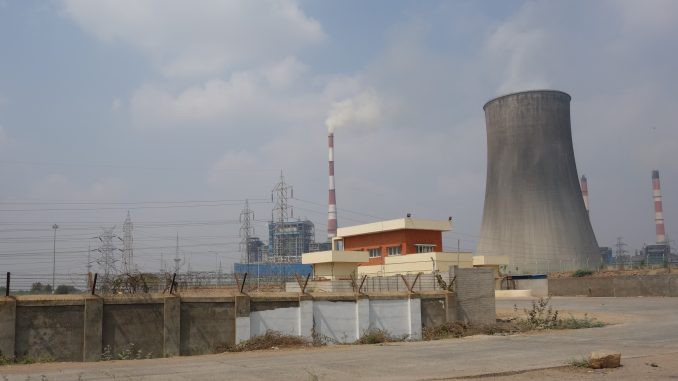
A late post this month – the CEA were later than usual in publishing their installed capacity figures for July just yesterday.
July’s generation saw the second consecutive month’s year-on-year jump for coal-fired power, while the same comparisons for renewables and hydro showed little change, and a minor increase for nuclear power. Has coal resumed its upward march after a lull at the start of the year? July’s figures may not be sustained, if POSOCO’s data for the first three weeks of August are borne out in next month’s CEA data.
Up until this month, renewable data lagged conventional values by one month. The CEA have now started to publish tentative renewable generation data for the month and on the same schedule as that for other sources, so all the data shown below is current up to the end of July.
It remains to be seen how well the actual values, available a month later, match the tentative numbers. While they are fairly close for conventional sources, this data series needs several months to prove itself. In any event, all the values shown here are updated from the CEA’s tentative numbes to their actual CEA values except for the very latest month.
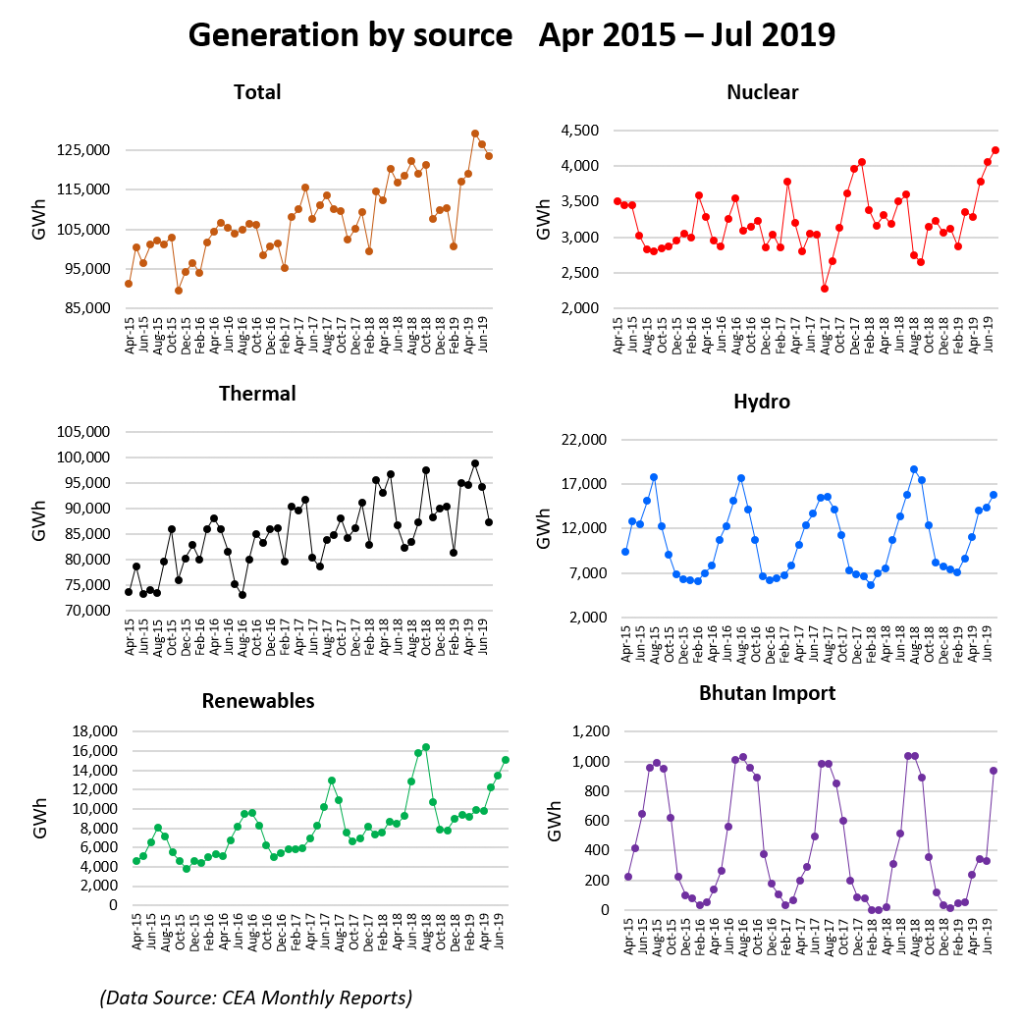
The 12-month moving average data shows the resumption of coal’s increase and the plateauing of renewables over the last 2-3 months quite clearly.
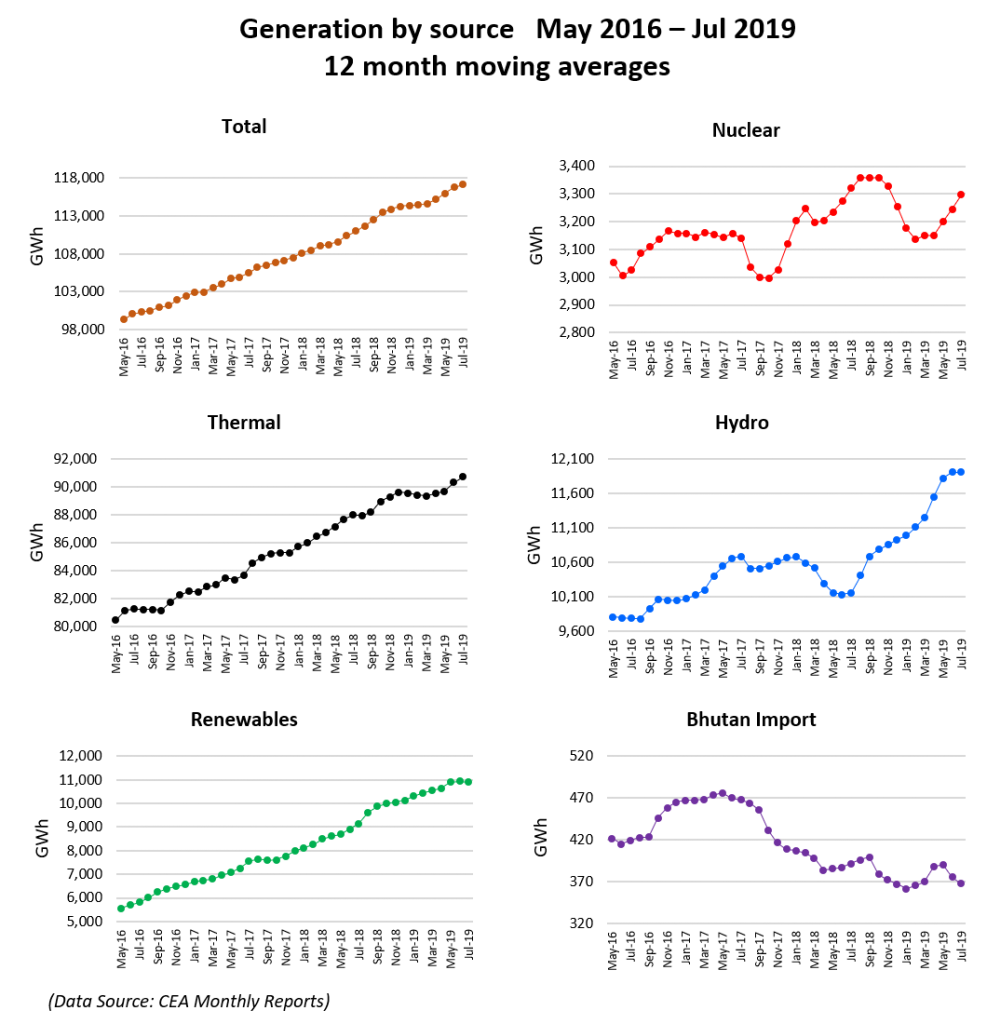
Renewable generation this July failed to eclipse its values for the previous year – for the first time in five years. There are a couple of caveats. Firstly, the new CEA “tentative” renewable data for July lumps together all sources other than wind and solar (hence the new category – and colour – in the graphs below for the latest month – ‘All except Wind & Solar’). Secondly, there are some sizeable departures between the accumulated generation values for renewables reported by POSOCO each day and those reported by the CEA each month, especially during the monsoon. The reason for these differences is unclear. Nonetheless, renewable generation looks to be in a period of much lower growth than we have been accustomed to seeing.

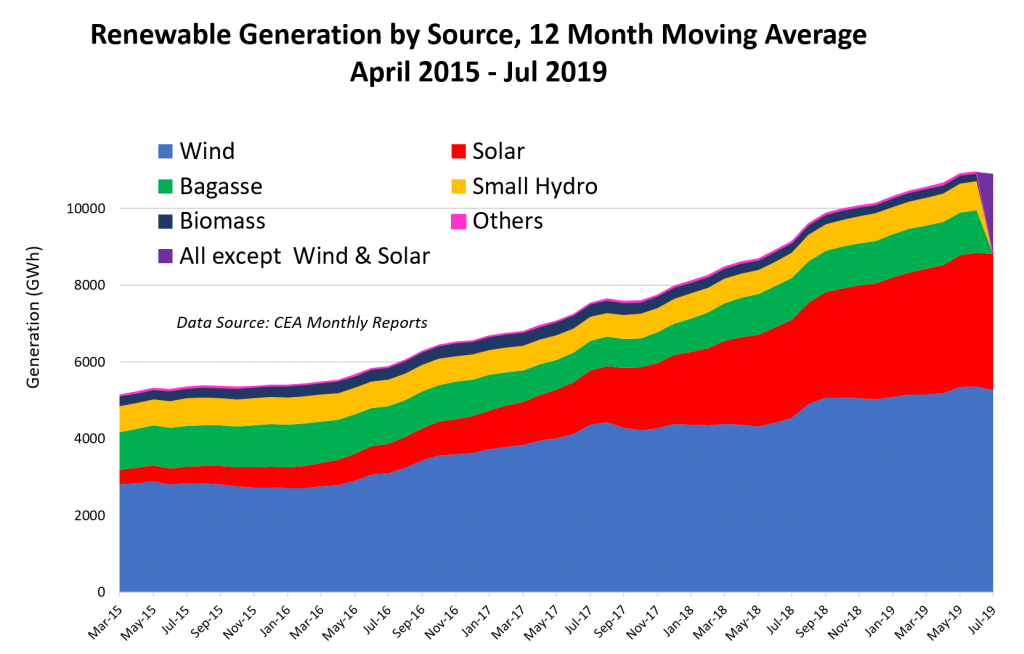
With the addition of the Nabinagar TPS Unit 1 in Bihar, to be used in part for Indian Railways, and Ib Valley Unit 3 in Odisha, and with no coal retirements in July, thermal capacity increased by about the same as renewables in July.
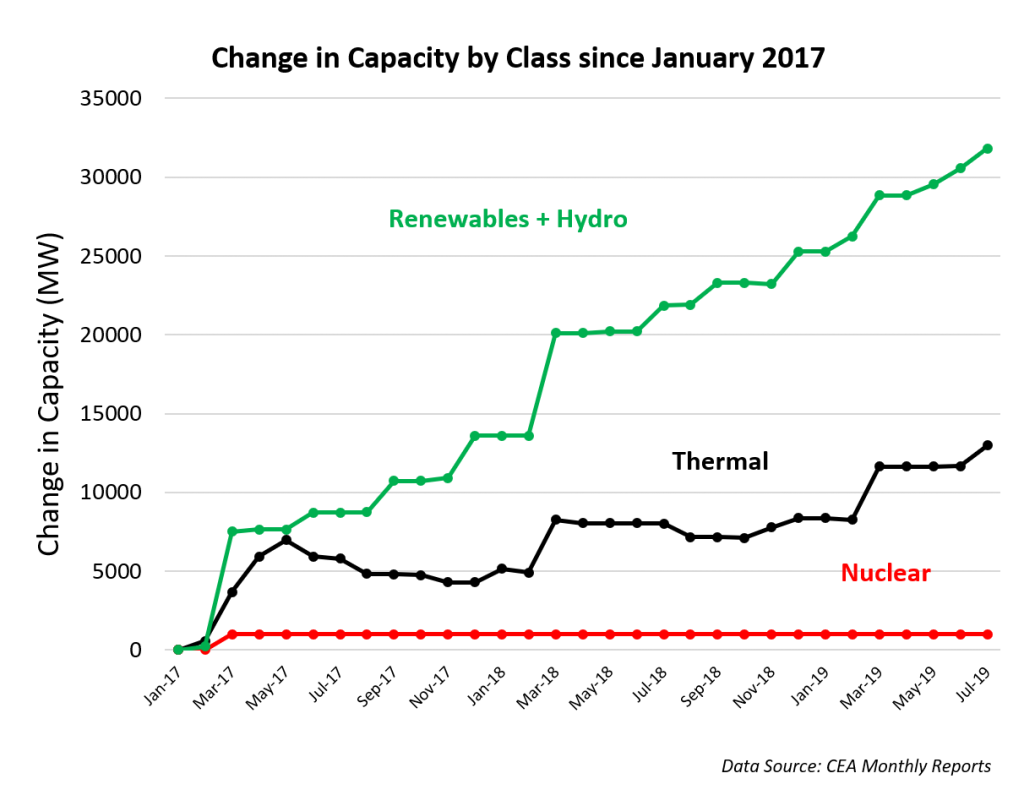
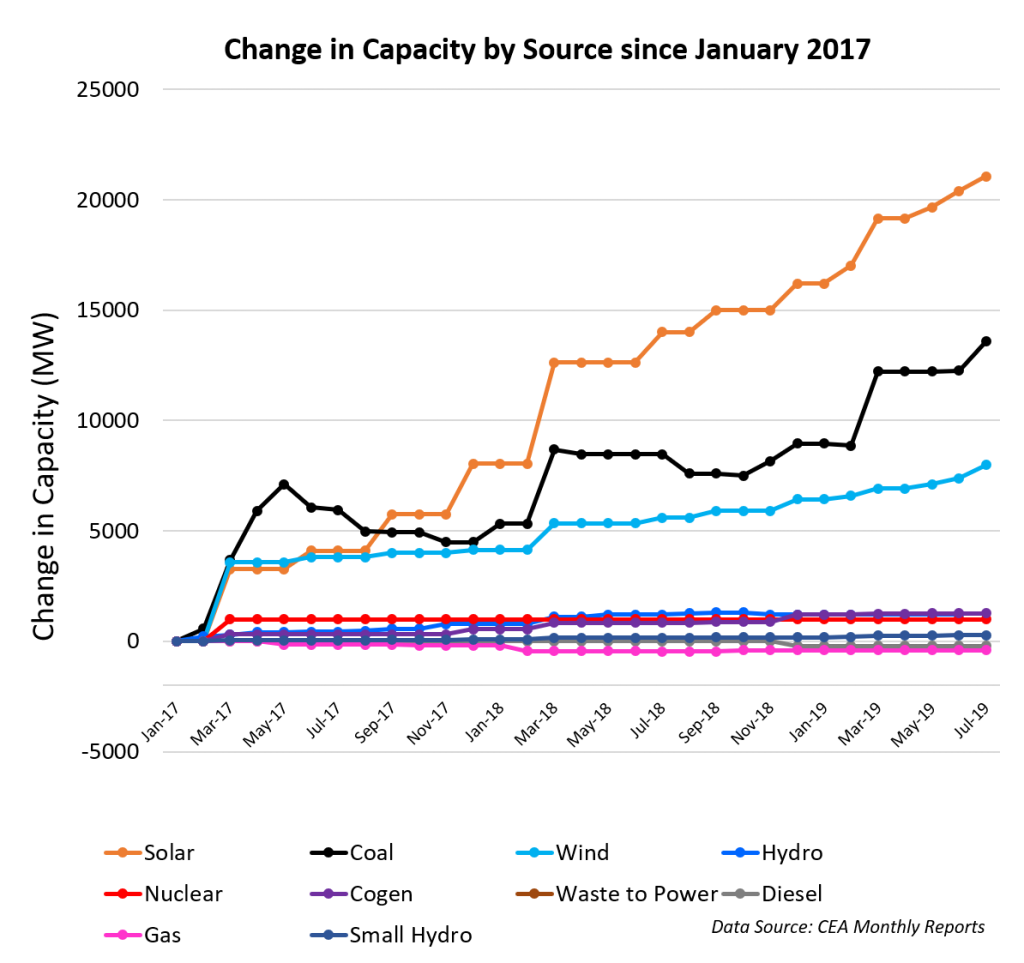
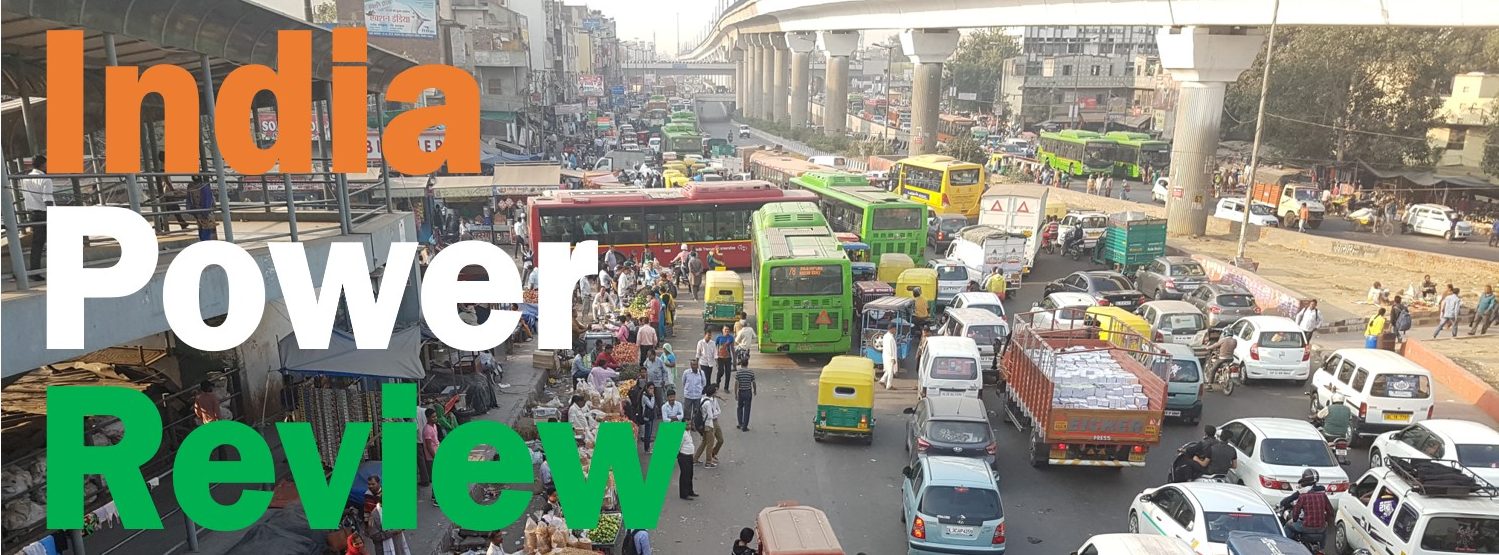
Be the first to comment